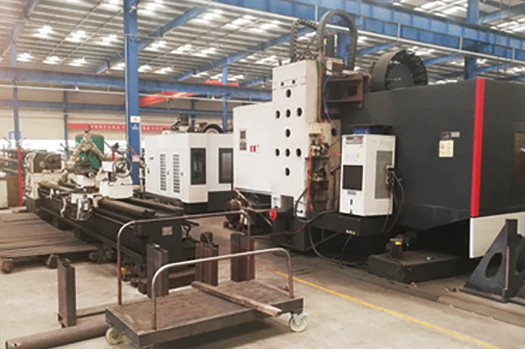
- Afrikaans
- Albanian
- Amharic
- Arabic
- Armenian
- Azerbaijani
- Basque
- Belarusian
- Bengali
- Bosnian
- Bulgarian
- Catalan
- Cebuano
- China
- China (Taiwan)
- Corsican
- Croatian
- Czech
- Danish
- Dutch
- English
- Esperanto
- Estonian
- Finnish
- French
- Frisian
- Galician
- Georgian
- German
- Greek
- Gujarati
- Haitian Creole
- hausa
- hawaiian
- Hebrew
- Hindi
- Miao
- Hungarian
- Icelandic
- igbo
- Indonesian
- irish
- Italian
- Japanese
- Javanese
- Kannada
- kazakh
- Khmer
- Rwandese
- Korean
- Kurdish
- Kyrgyz
- Lao
- Latin
- Latvian
- Lithuanian
- Luxembourgish
- Macedonian
- Malgashi
- Malay
- Malayalam
- Maltese
- Maori
- Marathi
- Mongolian
- Myanmar
- Nepali
- Norwegian
- Norwegian
- Occitan
- Pashto
- Persian
- Polish
- Portuguese
- Punjabi
- Romanian
- Russian
- Samoan
- Scottish Gaelic
- Serbian
- Sesotho
- Shona
- Sindhi
- Sinhala
- Slovak
- Slovenian
- Somali
- Spanish
- Sundanese
- Swahili
- Swedish
- Tagalog
- Tajik
- Tamil
- Tatar
- Telugu
- Thai
- Turkish
- Turkmen
- Ukrainian
- Urdu
- Uighur
- Uzbek
- Vietnamese
- Welsh
- Bantu
- Yiddish
- Yoruba
weld smoke
The Effects and Mitigation of Weld Smoke
Welding is an essential process in various industries, from construction to manufacturing, allowing the joining of metals and other materials effectively. However, one significant concern associated with welding is the production of weld smoke, which can pose serious health risks to welders and those nearby. Understanding the composition of weld smoke, its health effects, and effective mitigation strategies is crucial for maintaining a safe working environment.
Composition of Weld Smoke
Weld smoke is generated during the welding process due to the combination of high heat and the materials being welded, along with the welding consumables such as electrodes, fluxes, and filler metals. The smoke consists of fine particles of metal, oxides, and other hazardous compounds that can be harmful when inhaled. Depending on the materials being welded, weld smoke can contain a variety of toxins, including manganese, nickel, lead, and chromium. Each of these elements has specific health risks associated with exposure.
Health Effects of Weld Smoke
The inhalation of weld smoke can result in short-term and long-term health problems. Short-term exposure may cause irritation of the eyes, nose, and throat, along with symptoms such as coughing, dizziness, and headaches. Prolonged or repeated exposure can lead to more severe health issues, including respiratory illnesses, neurological effects, and even cancers in some situations. Manganese, for instance, is linked to neurological disorders, while exposure to nickel and chromium can increase the risk of lung cancer. Therefore, ensuring proper respiratory health for welders is paramount.
Mitigation Strategies
To protect workers from the dangers associated with weld smoke, various mitigation strategies can be employed
. Here are some of the most effective approachesweld smoke

1. Ventilation Adequate ventilation in the workplace is essential. Local exhaust ventilation systems can capture and filter weld smoke at the source, preventing it from dispersing into the working environment. Ensuring that the workspace is well-ventilated can also help dilute harmful fumes.
2. Personal Protective Equipment (PPE) Welders should be provided with suitable PPE, including respirators, face shields, and protective clothing. Respirators with appropriate filters can significantly reduce inhalation of hazardous particles.
3. Training and Awareness Providing welders with training on the risks associated with weld smoke and the importance of safety measures can lead to better compliance with safety protocols. Workers should be educated on how to recognize symptoms of exposure and the steps they can take to protect themselves.
4. Regular Monitoring Conducting regular monitoring of the air quality in welding environments can help identify hazardous levels of particulates and ensure compliance with occupational safety standards. This monitoring should include assessments for specific contaminants present in weld smoke.
5. Health Surveillance Implementing health surveillance programs for welders can help detect early signs of health issues related to weld smoke exposure. Regular check-ups and screenings can facilitate early intervention and contribute to better long-term health outcomes.
6. Material Substitution Whenever possible, using welding materials with lower toxicity can reduce the overall risk of harmful exposure. Research and development in welding technologies can lead to safer alternatives that do not compromise the quality of the work.
Conclusion
Weld smoke is an unavoidable byproduct of the welding process, but its risks can be effectively managed. By understanding its composition and health effects, and implementing robust mitigation strategies, industries can protect workers and create a safer environment. Ensuring the well-being of welders is not only a legal obligation but an ethical imperative that contributes to the overall health and productivity of the workforce. As the industry continues to evolve, so too must our commitment to worker safety in the face of potential hazards like weld smoke.
Products Categories
Latest News
-
Unmatched Mobility and Efficiency in Container Handling Equipment
NewsJun.26,2025 -
Streamlined Approaches and Equipment for Container Handling
NewsJun.26,2025 -
Revolutionizing Cargo Management: Solutions for ISO Container Handling
NewsJun.26,2025 -
Equipment Insights: Revolutionizing Container Handling Operations
NewsJun.26,2025 -
Critical Components for Efficient Shipping Container Handling
NewsJun.26,2025 -
Advanced Equipment and Systems for Efficient Container Storage and Handling
NewsJun.26,2025 -
Unrivaled Components in Structural Engineering Solutions
NewsMay.28,2025











